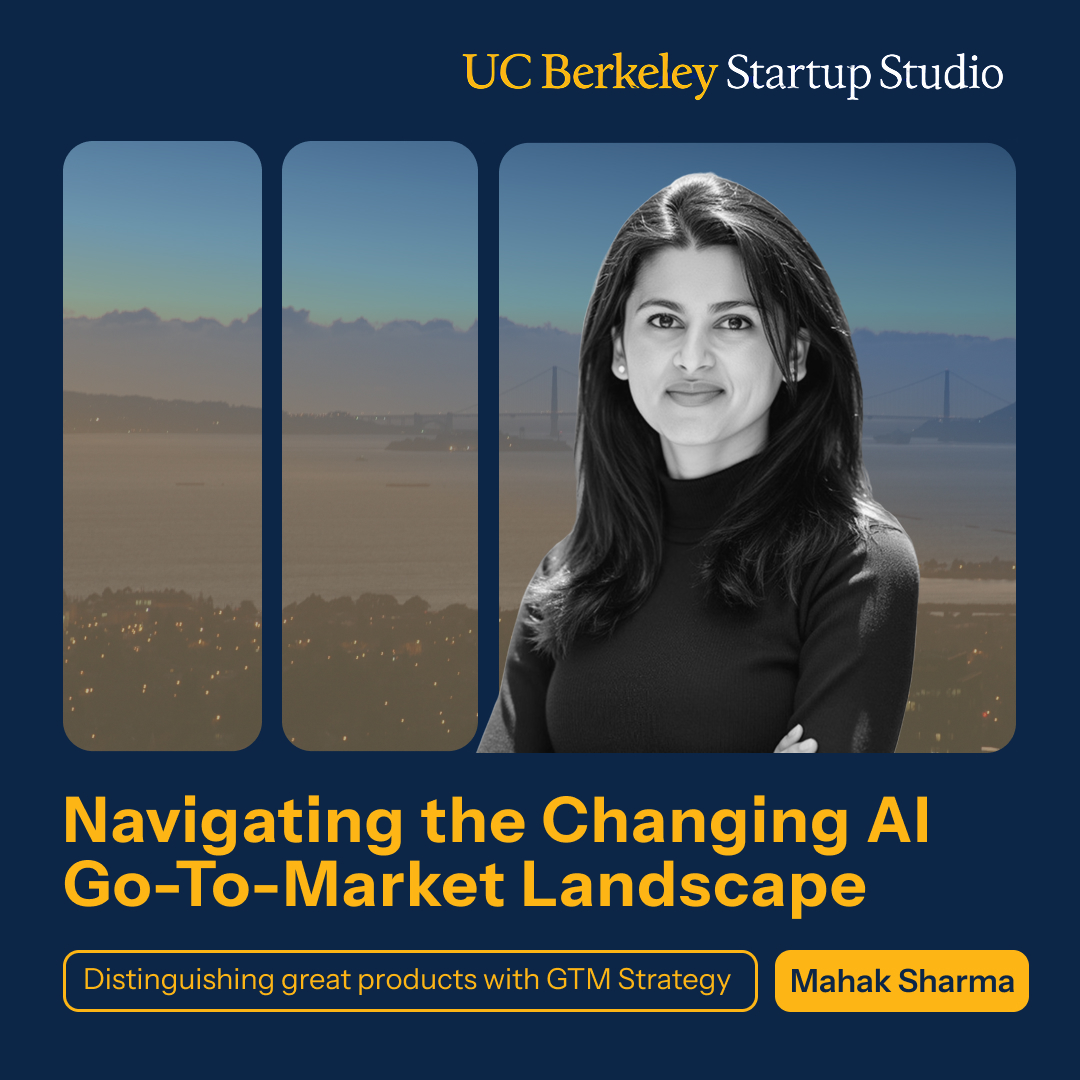Navigating the Changing AI Go-To-Market Landscape: A Conversation Instructor Mahak Sharma
Featured Author: Mahak Sharma

This spring, Mahak Sharma, Head of Platform Partnerships at Gemini, will be teaching a course titled AI Go-To-Market: The New Rules of Engagement, designed to guide AI founders, product managers, marketing professionals, and business leaders through the complexities of launching their products in a rapidly evolving landscape of AI applications. Previously, she lectured at SCET in ENGIN 183D – Product Management and is excited to share her expertise with the next generation of AI founders.
As AI technology becomes more accessible and creates a more level playing field, Sharma notes that GTM strategy is what distinguishes “good enough” products from extraordinary ones. In her course, participants will learn the core framework for GTM strategy for their AI products, create value-based pricing strategies and marketing messaging, and gain an understanding of the evolving industry and trends in AI GTM.
We caught up with Mahak Sharma to learn more about her background, challenges in current GTM practices, and what she is most excited about for her upcoming course.
Q: What inspired you to teach this class? What do you hope students take away from this class?
Having judged numerous startup pitches and led partnerships at Google Gemini, I consistently saw a gap: founders often lacked the practical knowledge of the broader AI ecosystem needed for a successful go-to-market. While their technical skills were impressive, they missed crucial considerations about market fit, user adoption, and long-term value creation. I wanted to bridge that gap and equip founders with the strategic insights they need to avoid common pitfalls early on. My goal is for students to leave with a comprehensive understanding of how to translate cutting-edge AI technology into sustainable, market-winning products.
Q: What drew you to focus on AI GTM strategy?
We’re witnessing a Cambrian explosion of AI applications. Over 80,000 AI products have been launched in the past 18 months. Building “good enough” AI has become relatively easy, leveling the playing field. However, in this crowded space, clarity on the problem you’re solving is paramount. The winners will be those who combine a truly valuable product with an exceptional go-to-market strategy. This class focuses on mastering that combination.
Q: Why is right now the perfect time to take the class?
Two years ago, the AI market was driven by pure excitement and rapid building. Now, we’re in a period of rationalization. The market is asking tough questions about value, utility, and cost. While there might be a slight slowdown in adoption, this is the perfect time to strategize and differentiate. It’s no longer enough to just build; you must define your unique value proposition and understand the nuances of your product strategy. This class provides the tools to navigate this critical phase.
Q: What makes launching an AI product different from launching other types of tech products?
Several key differences stand out:
- Value Definition: The concept of defining value has shifted. AI often involves horizontal tools with a broad surface area, requiring a fundamentally different approach to product vision.
- MVP and Evaluation: Instead of traditional development, you’re essentially training an LLM through rigorous evaluations (Evals). Product managers are now heavily involved in designing and executing these Evals to ensure the AI aligns with its intended use.
- Time to Value: Complex AI use cases often require longer validation periods. Demonstrating tangible value takes time, which impacts the go-to-market strategy and user adoption.
Q: What are some of the biggest challenges right now for companies in their go-to-market strategy?
Despite board-level recognition of AI’s importance, we see significant challenges:
- Low Employee and Customer Confidence: Users are hesitant to adopt AI tools.
- Misaligned Use Cases: Companies often select inappropriate applications for AI.
- Compliance and Risk: Navigating regulatory hurdles and defining risk appetite is complex.
- Upskilling: The necessary AI skill sets are often lacking within organizations.
- Change Management: Implementing AI requires robust change management processes and support.
Q: What are some common mistakes that you see in AI companies?
Common mistakes include:
- Poor Expectation Management: Overpromising and underdelivering on AI’s capabilities.
- Ineffective Channels: Choosing the wrong distribution and communication channels.
- Data Issues: Underestimating the importance of high-quality data and data management.
Q: If you could give AI founders one key piece of advice about GTM, what would it be?
Go back to the first principles of the problem you’re solving. Focus less on the tools and more on the fundamental value you’re creating for your users. True innovation comes from deeply understanding and addressing real-world problems, not just from deploying the latest technology.
Through her course, Sharma aims to instill in participants a deeper understanding of AI GTM strategies essential for navigating this evolving landscape and a newfound confidence to apply their learnings in successfully launching their AI products.UC Berkeley Startup Studio, a new suite of affordable, live online courses open to anyone, anywhere in the world, democratizes access to premier entrepreneurship education at the #1 university for startup creation. Designed to equip founders with the tools necessary to launch their ventures, UC Berkeley Startup Studio offers courses across a breadth of disciplines, led by a diverse group of accomplished entrepreneurs, executives, and leaders who bring first-hand experience building businesses to their instruction.
